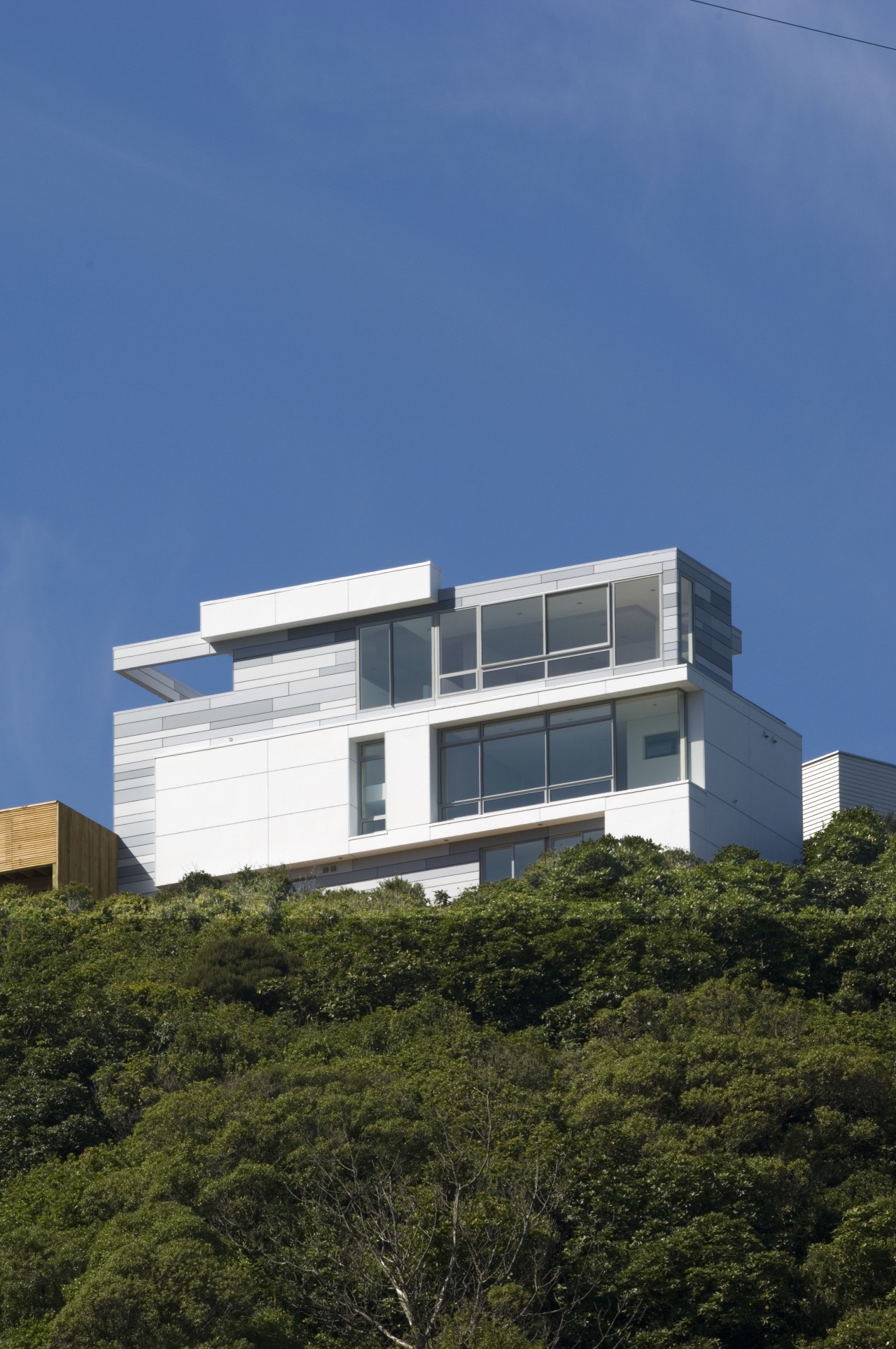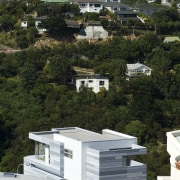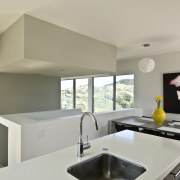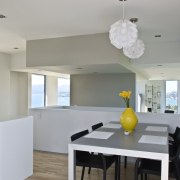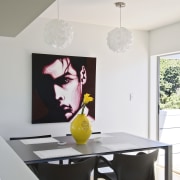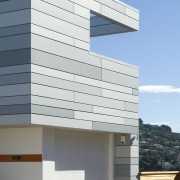Hilltop challenge
No simple white box, this contemporary house is characterised by complex interlocking forms and materials
Designing a home for this tree-clad, windysite was never going to be easy. On a steep slope, much of the block was conservation land covered in regenerating bush. Only four metres of the land was level and that was at the narrowest point of the site, on the boundary line of other houses.
It was a challenge that had put off many prospective buyers. Architects Richard Wiles and Erin Collins spent weeks assessing the site before they decided to take it on. The couple wanted a home with all-day sun and views, and this site gave them both. It also allowed them to explore their professional interest in interlocking forms.
Their approach was to work with the site rather than against it, positioning the three-storey home so that it turns its back on the street and opens up to views of the harbour and gorge.
To create enough flat land to accommodate the home's footprint, the basement was excavated into the slope, allowing the two upper stories to be positioned high over the bush.
The unassuming front elevation provides an element of surprise, as visitors step from the street into 360º views over the trees. Tiny windows at the front of the house, designed to provide privacy, give way to extensive glazing that brings daylight deep into the house and maximises the views.
Designing and building for themselves meant Wiles and Collins could explore concepts they wouldn't normally venture with clients.
"We both wanted to design a contemporary home that was more dynamic than a simple white box," says Wiles. "We are interested in the way three-dimensional forms can wrap around each other."
Their design comprises a series of interlocking layers, differentiated by alternating areas of white cement board and mosaic panels that extend around all four elevations of the home. A stepped, flat roof provides additional spatial interest.
Few exterior features are as distinctive as the mosaic panels.
"I'd wanted to do something similar to this on another project, but in glass. I didn't get the chance then, so the idea of using mosaic cladding had been in my mind for some time," says Wiles.
The mosaic panels are in different widths and lengths, painted five tones of blue-grey to merge with the sea and sky. Wiles positioned the panels over extruded aluminium frames, which form negative detailing.
"The exterior is best viewed from a few metres away, where the aluminium produces sharp horizontal black lines," he says.
Internally, the spaces echo the exterior no room is a rectangle or square. As well as providing an element of the unexpected, the irregular shapes create zones within the larger spaces.
The living room provides an outlook over the home's roof, which has been clad to resemble a deck. When the sliding glass doors of the living room are open, the room itself becomes a deck. Views of a nearby pylon have been obscured by the position of the walls.
Practicalities have driven the design as much as aesthetics, says Collins.
"The overhangs provide protection from the sun, and the deck on the first level has high walls that protect it from the wind. We installed thick insulation and commercial-grade double glazing to keep the house warm the glazing also provides protection from noise and wind," says Collins.
Wiles and Collins have planted indigenous trees to replace those lost during construction. One day, the young plants will merge with the rest of the regenerating bush.
"Apart from the basement, we are way above the trees, and we can look down on them from most rooms in the house," she says.
Credit list
Interior and kitchen designers
Cladding
Tiling
Paints and varnishes
Furniture
Benchtops
Oven, microwave and dishwasher
Refrigeration
Story by: Alison Wall
Home kitchen bathroom commercial design
